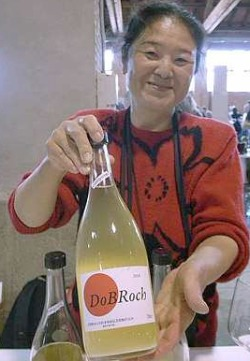Organic wines have now found their place among connoisseurs.
NOT too long ago, organically labelled products were somewhat a curiosity on the shelves. These days natural products that were once sold in specialist shops have gone mainstream, thanks to a more health-conscious consumer.
We now abide by the mantra, “we are what we eat”. Purity and freshness is what consumers want. What has happened to peanut butter and honey has also made the transition to wine: More folks now want organic wine.
But not many consumers know that wineries were serving up organic wine back in the 1970s, long before it became trendy. Connoisseurs, however, stayed clear of these wines then. The truth was that many of these food producers were more eco-friendly and pesticide-adverse than they were capable winemakers.
Without the addition of a preservative, sulphites, in the wines, the alcohol quickly turned into vinegar. Because of the short shelf life, organic wines then also cost more.
Fast forward to the present. Organic and natural wines now have a respectable place in the world of wine. Wine connoisseurs won’t blink an eye at reaching for an organic bottle because it tastes good. Some even believe it’s healthier.
But what brought on this change?
Working with the environment for one. Wineries started employing natural methods, vines grown on soils fertilised by organic compost. The compost is made from organic materials ranging from animal manure to seaweed. Over time, the vines developed a situation-responsive immunity to attack by pests and diseases. With this resistance to diseases they grew healthier. The end result is better-tasting organic wines now.
In 2004, Fortune magazine turned the thinking of organic wines on its head when it released the results of its blind tasting. Wine experts, including a Master of Wine and head sommeliers, blind-tasted 10 biodynamic wines (similar to organic, read on for explanation) and 10 conventionally made wines. The conclusion was nothing short of a coup for organic wineries around the world: The experts pronounced that nine of the biodynamic wines were indeed superior to their conventional counterparts. The rest is history.
So what’s the difference between natural, organic and biodynamic wines? To many, they may all mean the same thing – wine made without the addition of chemicals.
The difference is in the approach.
Natural wine is a general description that encompasses the making of wines using organically grown grapes. In addition, during the production process, there can be no additives. In essence, no sugar or sulphur is added and the wine is not even filtered. It is thus made in the most natural way, as nature intended.
Organic wine refers to wine made from grapes on which synthetic pesticides, herbicides and/or synthetic fertilisers are not used. During the winemaking process, sulfites (preservative) are not added although the wine may contain up to 20ppm (parts per million) sulfites that occur naturally during the fermentation process.
Biodynamic, however, goes one step further and grows, nourishes and harvests the grapes in accordance with the earth’s natural rhythms, such as the cycles of the moon, for example. We will look at the fascinating subject of biodynamics in more detail in a future column.
For those who haven’t yet tasted wines made the natural way, I encourage you to give it a try. Personally, I find the wine flavours cleaner, clearer, more intense and with more texture and liveliness. I call this the soul of the wine.
Recently, I went to two natural wine exhibitions for a tasting.
The first was a small exhibition in Burgundy, France, called l’Essence des Sens.
There, 35 growers from Burgundy, Beaujolais and the Jura regions showcased their wines. I tasted a Sylvain Pataille Marsannay, redolent with white flowers, fruits and sweet fruit; a Domineque Cornin Macon with intense sweet fruit; a De la Bonne Tonne Morgon with bitter sweet cherries and soft velvety texture; and a Chateau de Chavanes, Savagnin, all nutty with mushroom nuances. They were all excellent wines.
Chatting with the group of super-friendly producers, I soon realised that for many of them, it was the first time they had met someone from South-East Asia!
Next, came the VinoVinoVino exhibition in Italy. This exhibition has been held yearly since 2004 when a group of four small organic winemakers got together with friends to exhibit their wines. Today, more than 100 wineries from around the world take part in this exhibition. Some are biodynamic, others are in the process of getting their organic certification. Exhibitors come from all over Europe.
Many of the wines here were very appealing too. To name a few: the soft, lively and lightly sweet Morella “Mezzanotte”; the honeyed saline Costadica “Prosecco”; the nutty and ethereal Guccione “Veruzza” Trebbiano; the multidimensional Occhipinti “il Frappato”; and the complex Cascina Ulivi, Montemarino Bianco Monferrato.
They were all unforgettable – not least a biodynamic sake made by a Japanese photographer specialising in wine countryside scenes!
Just how popular is the demand for naturally-made wines nowadays? Well, judging by the number of fairs sprouting up around the world, I’d say demand is on the upswing. There’s the Millesime Bio Organic Wine Fair in Montpellier, France, and the Five Bio Spanish Organic Wine Fair and the Biofach in Germany. At Biofach, one can not only explore wines but also foods of the organic type.
For more information on l’Essence des Sens, go to lessence-des-sens.com; for VinoVinoVino, go to viniveri.net/eng/vinovinovino.
Ed Soon is a qualified oenologist and has run wine shops and worked as a winemaker in various countries. He now writes and teaches about wine around Asia.






